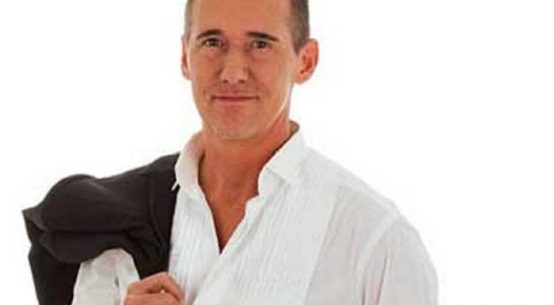
Speech Level Singing
Author: Kim Sutherland
[Deze pagina is helaas nog niet in 't Nederlands beschikbaar]
Basically, if the larynx stays down and the vocal cords stay together from the very bottom of the vocal range to the very top everything is fine. This also applies to all vowel and consonant combinations through out any phrase. If at any point the larynx jumps up or down or the tone becomes breathy then there is something wrong with the vocal process.
The larynx is the big bump in the middle of the neck just below the chin. This houses the vocal cords and controls the process of swallowing. When the larynx moves up, the muscles around the cords act as a sphincter and closes so as to prevent swallowing down the windpipe and into the lungs. This is a very important process when you need to swallow, but it is a very poor process when you are trying to sing. If you place your hand on your larynx and yawn, you will find that you can bring your larynx down as well. This is a good way to learn what it feels like to have the larynx stay down. The end goal here is to be able to keep the larynx from moving down as well as up. It should stay completely still as you ascend and descend.
The vocal cords, also known as vocal folds, are a pair of soft tissue cords that are joined at the front of the larynx and extend back. When they close, the back end of the cords come together (adduct), and the flow of air is temporarily stopped. When the pressure of air from the diaphragm overcomes the pressure of the muscles holding the cords together, they are blown apart and sound is made when they close again due to the resonation created. Then once again the air pressure overcomes the muscle pressure and the process begins again. If a singer is singing an A above middle C, this process happens 440 times every second. The pitch A above middle C vibrates 440 times per second. That is very fast and it is somewhat difficult to see this process happen even if you can see down the singer’s throat. Since the invention of the strobescopy it has become easier to view the vocal cord resonation process. If the vocal cords begin to come apart, the tone becomes breathy and the muscles around the outside of the larynx begin to tense. This becomes what is called a constricted phonation and is quite harmful for the voice.
This is a very brief and condensed version of what happens when you sing, there is obviously a lot more going on. But, to give you an idea of what is correct, take these two ideas and while you are singing, monitor them. See if you can keep your larynx still and your cords together. You will probably find that there is a certain area of your voice that is easy for you to accomplish this and certain points of your voice that are more difficult. These harder areas are called bridges, The key to Speech Level Singing is in understanding the bridges and the mix. Bridges in the voice are passage areas from one part of our vocal range to another. In Italian, they're called passagi - or maybe you've heard the term passagio. These passage areas are a result of vocal cord adjustments that must take place in order for us to sing high and low in our range. These vocal cord adjustments produce resonance shifts in our body.
Our first shift in resonance, or our first bridge, is our most crucial, because this is where our outer muscles are most likely to enter the picture. If they do, they tighten around the larynx in an effort to stretch the cords for the desired pitch.
Keep in mind, if you do not see a teacher's name listed on this site, they are not certified. We only endorse the information and work of certified teachers. It is unethical and illegal for any teacher to use the terms Speech Level Singing, Seth Riggs, or SLS that is not certified.
Seth Riggs
Seth Riggs is an American vocal coach and founder of a technique known as Speech Level Singing. Some of his students have included Ray Charles, Josh Groban(first LP only), Dusty Springfield, Michael Jackson, Madonna, Raghav, Whoopi Goldberg, Kalil Wilson and Philip Webb.
Kim Sutherland
Kim Sutherland has received teacher training from the world’s most prestigious vocal teachers: Maestro Seth Riggs (founder of SLS and vocal teacher of Michael Jackson, Ray Charles, Stevie Wonder, Barbara Streisand and more), Robert Raab Stevenson (worked with Christina Aguilera, Justin Timberlake, Kelly Rowlands and personal voice coach of Rihanna, specialist R&B styling), Greg Enriquez (Master Teacher SLS, coached James Ingram and Celine Dion) and Jeffrey Skouson (CEO of Speech Level Singing organization and Master Teacher), Katie Riggs (R&B recording artist KatyK and daughter of Maestro Seth Riggs), Kathy Kennedy (Master Teacher SLS), Spencer Welch (Master Teacher SLS) and Guy Babusek (Master Teacher SLS specialist classical voice training).


